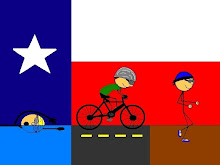First, however, it needs to be discussed why and how I chose to run a season on such old and worn out shoes rather than any of the viable options sitting in my closet...
While I don't personally own, nor I have I used, the Newton shoes, check out their website http://www.newtonrunning.com/run-better to get an introduction to the idea of forefoot running as opposed to heal striking. This helps to understand part of the reason I had recurrent issues when I increased my mileage with traditional heavy heeled shoes such as Asics or Salomon trail running shoes. Not only was I naturally a heavy heel striker, I found that when I put on my old racing flats, I achieved essentially the same benefit as the barefoot running idea and found that running was more comfortable and efficient without so much padding on my heels.
However, over a season of irregular running schedules, my feet rebelled against the poor internal structure of the old shoes, particularly the poor choice of seem placement and my choice to run barefoot in preparation for and in racing triathlon.
Thus, after my scare with plantar fasciitis after the 2008 US Open and the full foot blistering, I went to Luke's Locker in Dallas, one of those great places where they actually take a look at your foot structure and form and recommend a shoe based on your stride rather than just aesthetic preferences. The shoe I ended up with and have been highly satisfied with since mid October with regular running is...

The Saucony Grid Type A2, and I now wear socks on all training runs and will save the barefoot running for races only. You may notice there still is not much heel, but that's the idea, with a reduced cushion in the heel, I have learned to adapt my running stride from a severe heel strike to a more efficient forefoot stride.
Additionally, something I came across only after researching triathlon gear, but would recommend for all runners is my locklaces, check em out at http://www.locklaces.com/home.html . Not only do they make transitions fast by eliminating the need to tie shoes, but for regular training runs, it keeps pressure constant from day to day.
That's all for now, there's more to come,
Peanutt

Love that pic of the Grids!
ReplyDeleteThanks, though it is just a standard stock photo from the website. They really are great shoes and can't imagine ever going back to regular running in anything with any more of a heel than these.
ReplyDelete